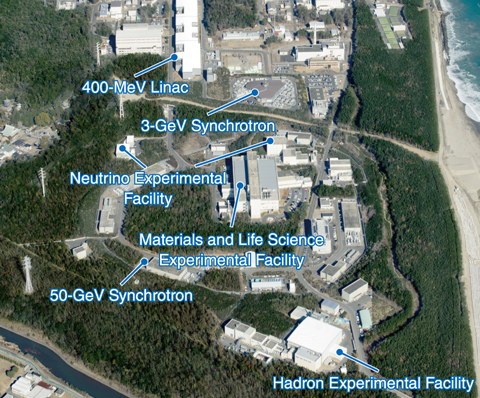
Fig.5-1 Japan Proton Accelerator Research Complex
In accordance with the Science and Technology Basic Plan formulated by the Government of Japan, we have aimed to contribute to the advancement of science and technology and the promotion of industry in Japan through researching using neutron and synchrotron radiation. This has included using the high-intensity proton accelerator at the Japan Proton Accelerator Research Complex (J-PARC) and the JAEA synchrotron-radiation beamlines at the Super Photon ring-8 GeV (SPring-8), as well as upgrading neutron facilities and devices and pursuing world-leading research in the fields of nuclear energy and materials sciences using utilize neutron and synchrotron radiation.
(1) Research and development at J-PARC
J-PARC, shown in Fig.5-1, is comprised of three proton accelerators, including a linear accelerator (LINAC), 3-GeV rapid cycling synchrotron (RCS), and 50-GeV synchrotron, and three experimental facilities. These facilities include the Materials and Life Science Experimental Facility (MLF), where research is performed over a wide range of fields using neutron and/or muon beams, the Hadron Experimental Facility, where nuclear and particle physics experiments using K-mesons and other particles are conducted, and the Neutrino Experimental Facility, where experimental work on T2K particle physics using neutrinos are performed. Each of these experimental facilities is open to users from across the globe.
Successive tests and component improvements have been conducted to realize stable operation of the accelerators with a beam of 1 MW. In Linac, a radio frequency (RF)-driven negative hydrogen ion (H-) source was developed. To increase the intensity of the beam current and operation time of the ion source, an H- beam with a peak current of 72 mA was injected into the Linac. The antenna damage rate was reduced to less than one-third by extending the life of radio frequency antennas (Topic 5-1).
The mechanism of beam loss in the RCS was determined via experimental and modeling work, a solution was then introduced. In FY2018 at the MLF, a user program for eight scheduled run cycles (176 days) was successfully implemented with an availability of over 90%, and a continuous 1-MW beam operation was achieved. Also at the MLF, 20 neutron spectrometers and 2 muon instruments were operated, and a wide range of experiments related to materials and life science were conducted. With the BL01 Four Seasons, the effect of electron correlation on spin fluctuation in the magnetic expiration structure of an iron-based superconductor has been investigated. As a result, observations and a theoretical interpretation of the spin fluctuation in the very high energy range of approximately 200 meV was successfully conducted (Topic 5-2). Additionally, a bump cathode for a 2d neutron detector with high detection efficiency and high resolution has been developed to utilize a high intensity pulsed neutron beam effectively (Topic 5-3). Furthermore, the design of a spallation neutron source was evaluated. The neutron flux was also measured and the ortho-para conversion characteristics of molecular hydrogen was evaluated for future improvements (Topic 5-4).
This research will help further the efforts to continue improving J-PARC and the research and development of this next-generation experimental facility.
(2) Research and development at the Materials Sciences Research Center (MSRC)
MSRC aims to create innovative results and seed research in a wide range of scientific, technological, and academic fields by developing and improving neutron and synchrotron-radiation instruments for advanced structural and functional analysis in Tokai (JRR-3 and J-PARC) and in Harima (SPring-8).
In FY2018, EuPtSi was observed to form a special particle-like topologically non-trivial spin texture called “magnetic skyrmion” under the US - Japan Cooperative Program on Neutron Scattering. This represented the first observation of the magnetic skyrmion lattice in a 4ƒ electron compound (Topic 5-5). This discovery provided new directions to explore another compounds and unveiled other characteristics of skyrmions.
Additionally, the microstructural formation mechanism of a pearlitic steel was elucidated using an electron scanning microscope (SEM), electron backscatter diffraction (EBSD), and neutron diffraction techniques (Topic 5-6). This information is expected to accelerate the development of high-performance steels. This research was supported by the Japan Science and Technology Agency (JST) under Collaborative Research based on Industrial Demand “Heterogeneous Structure Control: Towards Innovative Development of Metallic Structural Materials”, and done in collaboration with the Tokyo Institute of Technology, NIPPON STEEL & SUMITOMO METAL CORPORATION, and JAEA.
The laser coating of a metal on a dissimilar metal subtrate was observed by synchrotron radiation imaging using a time resolution of 1 ms at the SPring-8 (Topic 5-7). Optimal conditions for laser coating were then determined by in-situ observations of the melting and solidification phenomena. As Japan lacks extensive natural resources, developing recycling technologies of useful minor metals, i.e., urban mining, is essential. A new compound capable of forming complexes with lanthanides, individual elements which are difficult to separate, was developed and contributes to the establishment of separation and recycling techniques of lanthanides on the basis of structure analysis by X-rays (Topic 5-8).